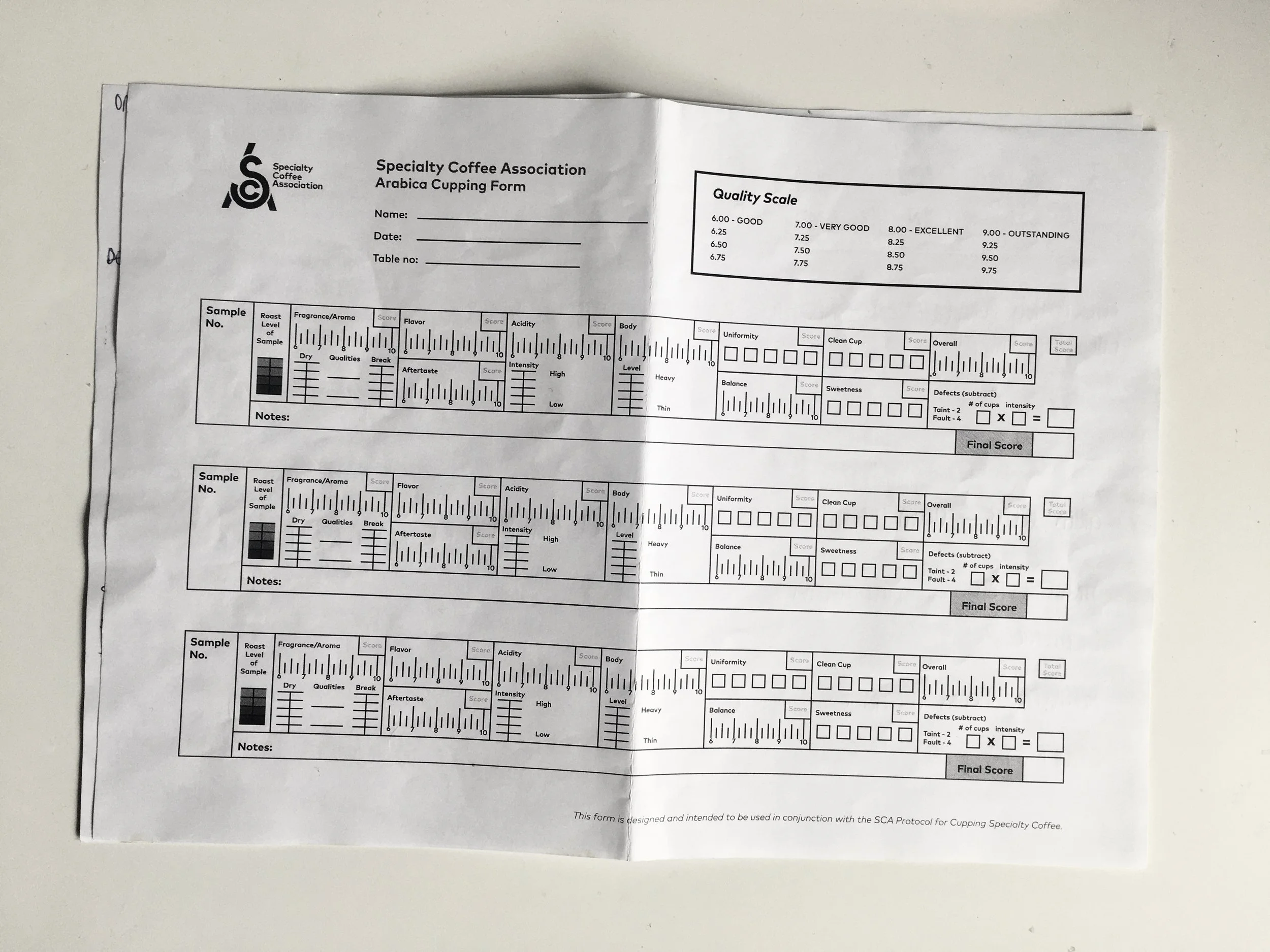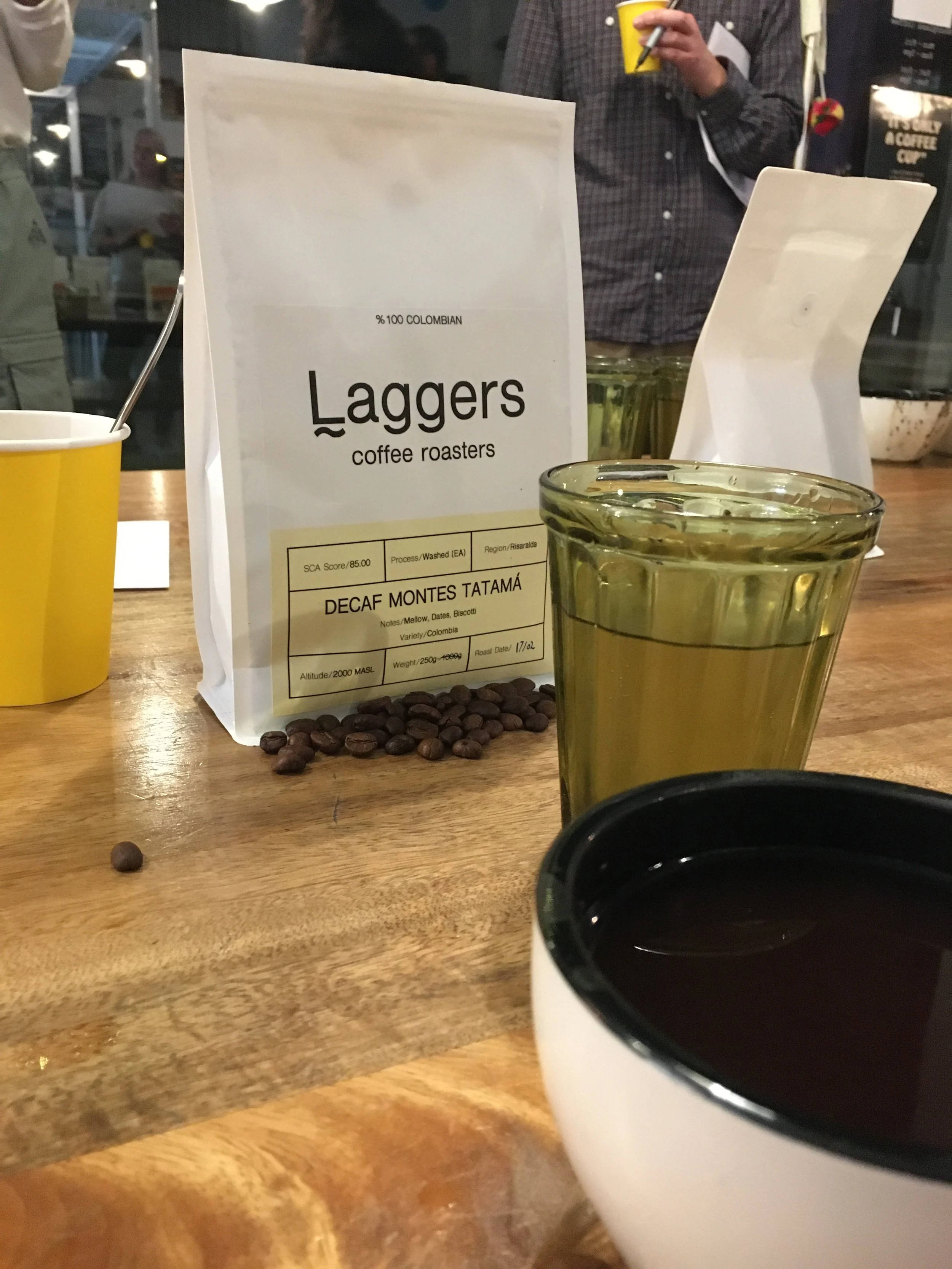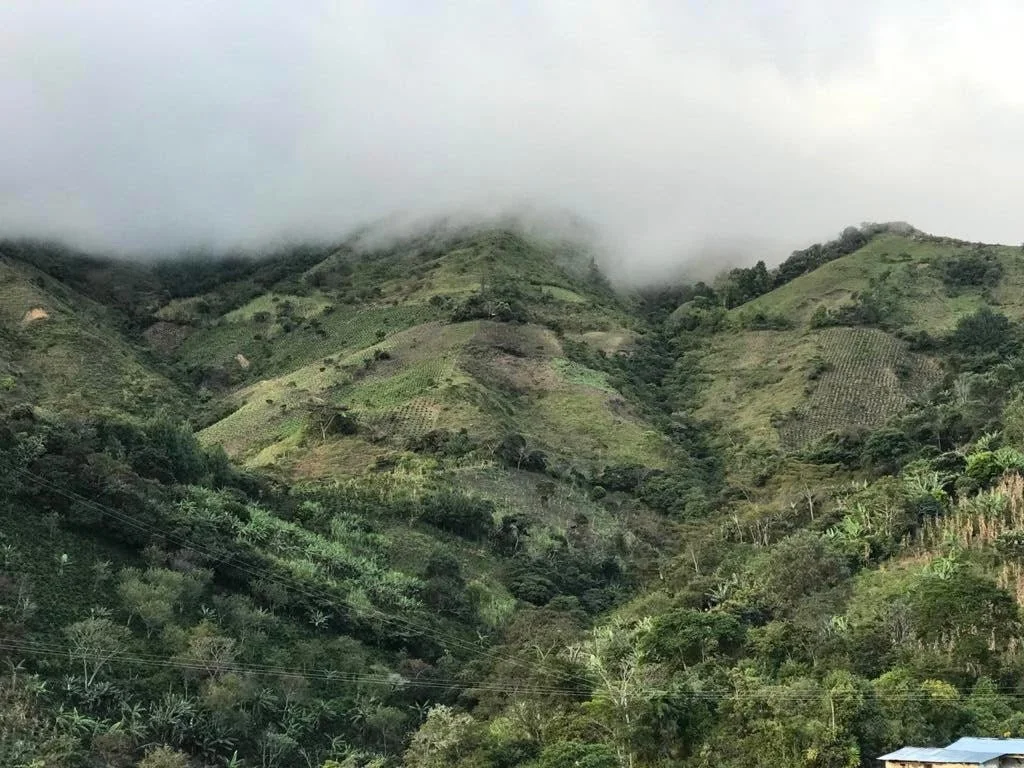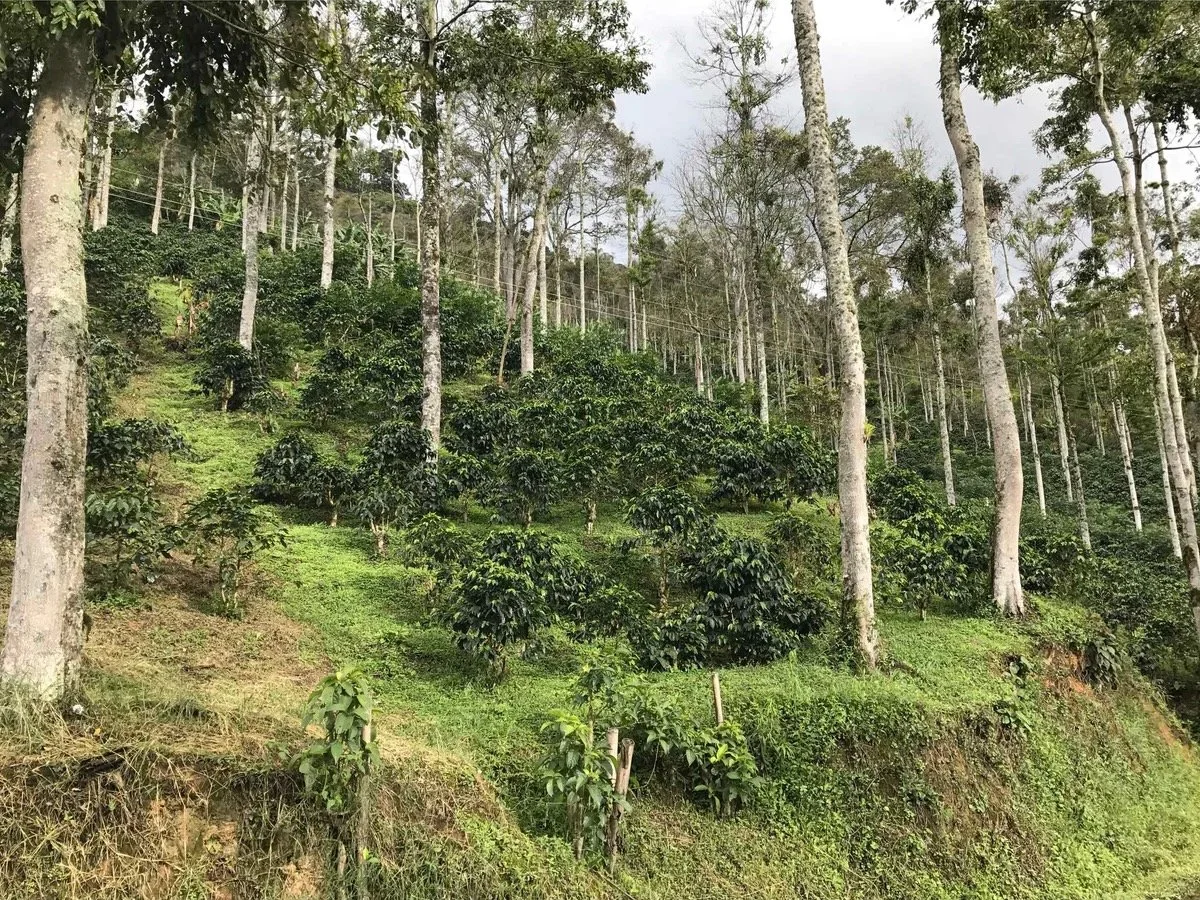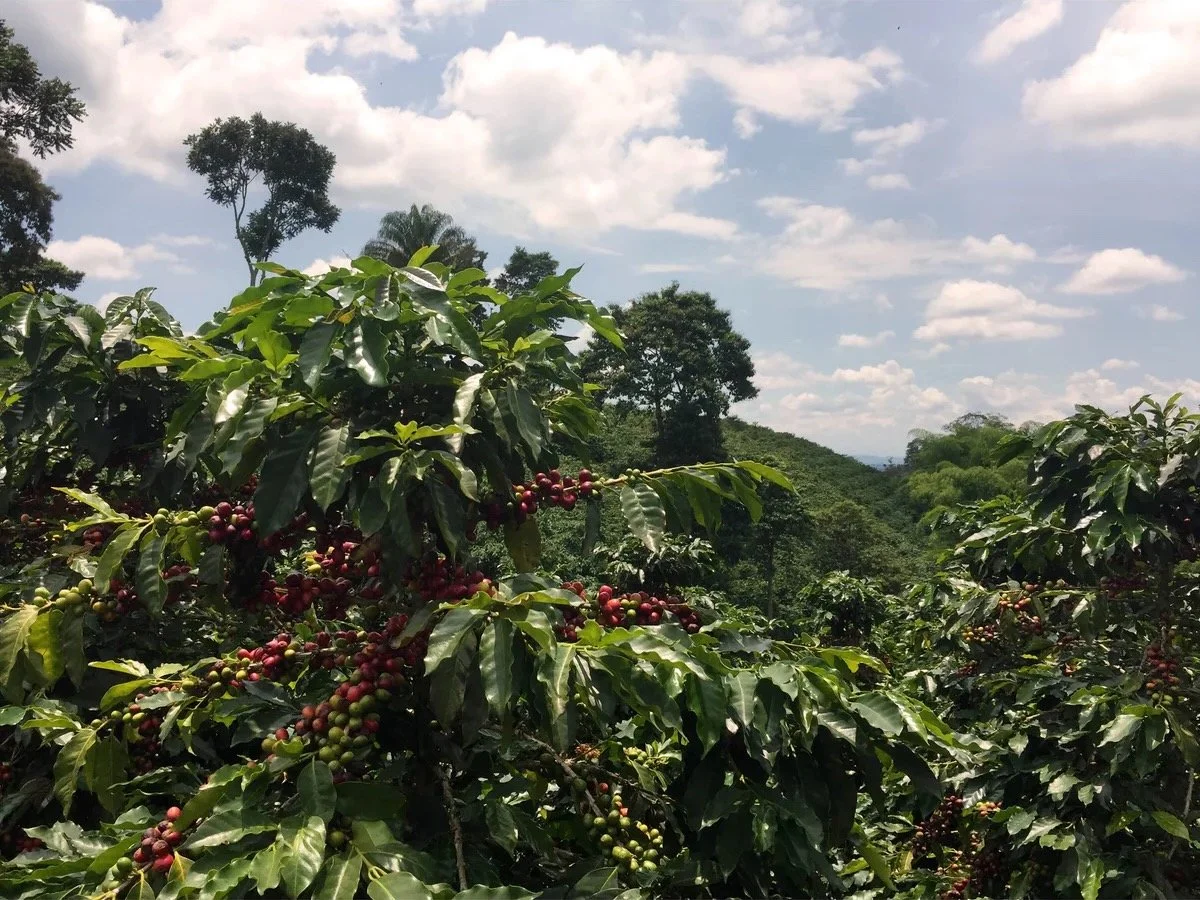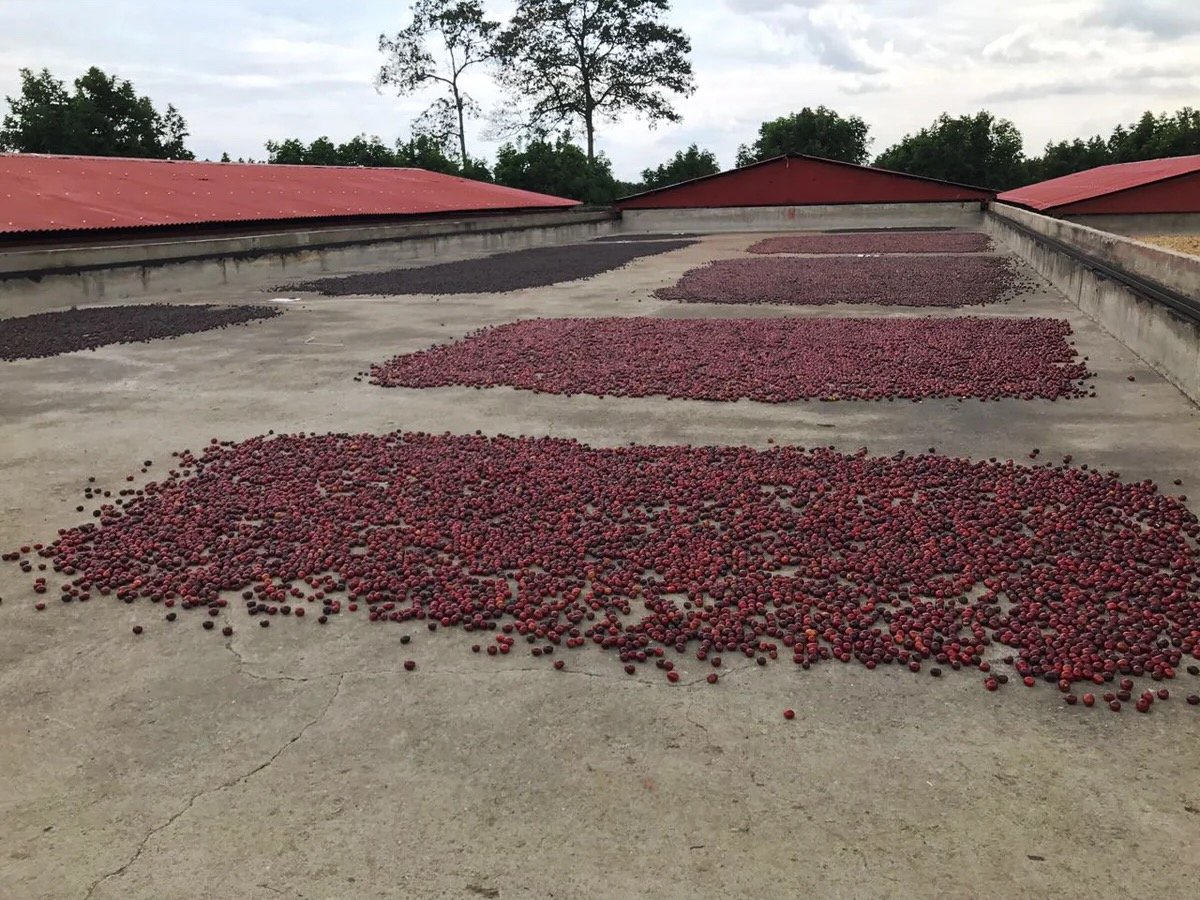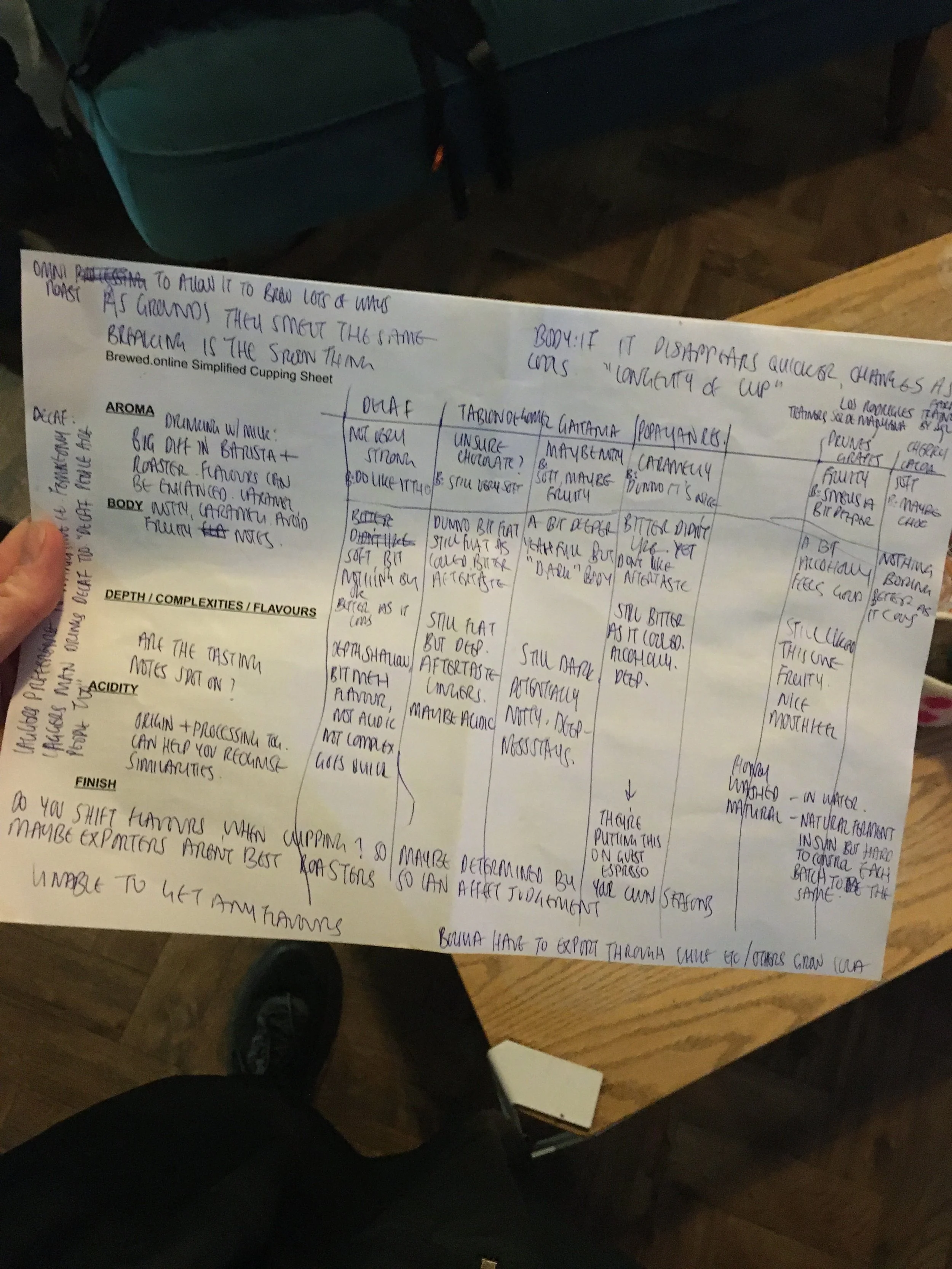Coffee cupping in Hackney.
I was invited to a coffee cupping evening in a Hackney coffee shop, and these are my reflections.
This coffee shop is situated in Hackney borough, but is a slight misnomer as it’s not on the stretch that is typically noted as Hackney (Hackney Central or Dalston) and is on the other side of Stoke Newington, yet isn’t quite North London either. Due to this it holds the presence of both; cool though perhaps more habitual and relaxed. Previously known as Hourglass Coffee and recently rebranded as Brewed in order to complement the existing online coffee subscription service and store, I’ve been a regular for perhaps 3.5 years, and moreso a regular since I moved just an 8 minute walk away. Being a cupping virgin, and being a fan of this space, I wanted to share my thoughts and insights from attending such an event.
Background.
From the outside, to me, events like coffee cupping and wine tasting are pretentious, privileged and ultimately middle class. I’ve never been to a wine tasting, so I can’t fully surmise if these situations are still seemingly pretentious, privileged and middle class (upper class?), though after the one hour coffee cupping, I began to appreciate how those who cup and taste are the middle ground between farms and the finished product, and so I guess they’re communicators.
Coffee cupping was new to me previously. I had seen tables with little cups, and could guess that it was to do with smelling and tasting, however hadn’t anticipated the quirks involved, such as slurping, or terminology, including breaking.
The evening, hosted by Sammy (I guess one half of Brewed?), was begun with an introduction to the two guest roasters - Laggers and Max Fronteras. Laggers Coffee Roasters is the culmination of two childhood friends, David and James, who have a shared passion for great coffee and family ties to Colombia so they specialise entirely on sourcing, shipping and roasting Colombian coffee. Max Fronteras are a North London micro roastery (led by Julian) producing small batches of special coffee from a variety of Central American, South American and African countries.
Brewed.
Brewed is a fairly small space, yet there’s always room aplenty to accommodate remote workers, creatives, readers, families and meetings. The music choices always seem to present the day with motivation to be productive and calm, and so whenever I do go there to spend an hour reading or to do some writing, I’ll come away feeling that I’ve accomplished something.
There’s also always good (unusual) banter, tasty pain au chocolat (and more, but that’s my fave) from local Dalston Dusty Knuckle bakery or otherwise creamy sourdough cinnamon buns from an indie local (who also bakes the sourdough loaves), and of course, superb coffee.
Located opposite Clissold Park it does get busy on a weekend with park amblers popping in (and strangely busy too on a Friday - is this a WHF day for office workers?) and frankly can get a bit loud with the amount of young children, but then again, what Hackney coffee shop wouldn’t be. And it shows how favoured this spot is for locals. I do tend to stay within a one mile radius most days, because why would I venture out into the city proper when Hackney offers me the green spaces, the coffee, the refill shop, the bakeries, the reservoir (and my place of work too).
Images: 1. The Brewed in-store coffee wall (that day I was starting to read Terra Shiva by Vandana Shiva), credit Brewed; 2. I tend to do my heavy reading here as I’m able to concentrate (on weekdays); 3. I have a favourite nook; 4. The inaugural cupping hosted by Sammy with roasters Laggers and Max Fronteras.
Cupping.
Ok, so the cupping.
We were invited to take a sheet and pen so that we could make notes, which I was pleased about as I’d forgotten the notebook I take everywhere to record, well, notes. One sheet was an ‘Arabica Cupping Form’ from the Specialty Coffee Association, with scoring scales for all sorts of attributes that you can see in the photo below:
bundled together were fragrance/aroma, dry, qualities and break (which is all for before water is added to the grounds), and then
flavour
aftertaste
acidity (is it high or low intensity)
body (is it heavy or thin)
uniformity
balance
clean cup
sweetness
and an overall score.
Then there’s a bit for defects.
And a bit for notes.
Image: the Arabica Cupping Form from the Specialty Coffee Association used by roasters to address such coffee qualities as aroma, notes, acidity and body.
We were additionally, helpfully, given a simple recording sheet with only: aroma, body, depth/complexities/flavours, acidity and finish.
I wasn’t the only attendee who’d never been to a cupping before, so it was nice to be able to share vague notes with the others regarding how we were finding it, and that also helped to break down the concern of judgement and getting it wrong, which is perhaps why these things come across as pretentious. However, it was also a low key space where I felt comfortable being honest and curious (am I anything else?) because it had been established as such that it was an open forum, and each step was explained to us.
Even before attending I felt that perhaps cupping would have a ritualistic air to it - ceremonial, as with tea - but on leaving the space did feel I had connected with the material in a different way to simply drinking the brewed stuff. Though we’re using all senses simultaneously to assess the complexities (including sight for the colour, which apparently can be utilised best at bean stage to distinguish things there), I’ve split my thoughts below into simply smelling and tasting as that’s how I approached the session.
Smelling.
The cups on the table were filled with grounds from six various coffees - four from Laggers and two from Max Fronteras, with two cups per variety in case one became tainted (from snot?). Our first activity was to sniff a cup from each of the varieties and note down our initial thoughts, for which I wrote down that as grounds they all smelled the same (I even went around twice, and sniffed both of the cups for each variety).
I didn’t record the timing for each step, but was aware that Sammy was keeping tabs on this, for instance once water was added to the grounds so that we could have another sniff here before breaking. Integral I guess so that it wasn’t being overbrewed and the qualities were optimised.
To make it easier to identify my thoughts through out, here is a list of the six coffees that were cupped:
Laggers - Decaf Montez Tatamá / Notes: Mellow, dates, biscotti / Variety: Colombia / Process: Washed
Laggers - Tablón de Gomez / Notes: Caramel, mandarin, spices / Variety: Castillo, Caturra / Process: Washed
Laggers - Gaitania / Notes: Cherry, orange, hazlenut / Variety: Caturra, Typica / Process: Washed
Laggers - Popayán Reserve / Notes: Tangerine, floral, caramel / Variety: Colombia, Castillo, Caturra, Catimor / Process: Washed
Max Fronteras Caranavi-Bolivia / Notes: Prunes, grapes / Cultivar (variety): Java / Process: Natural
Max Fronteras Caranavi-Bolivia / Notes: Cherry, cacoa / Cultivar: Caturra, Catuai / Process: Washed A.
Images: Six images of the six roasts available during the coffee cupping. Read all their names and details above.
Once hot water had been added to the grounds, we went around again. I was already amused by the squatting and bending required to stick our faces close to the cups due to the low table, yet everyone just got on with, therefore I did too. Here I had noted (1) not very strong (2) unsure chocolate? (3) maybe nutty (4) caramelly (5) fruity (6) soft. So you can already see that I was uncertain what I should be noting - whether the scents or the depth - and wrote whatever came to mind.
“Breaking” is where you get your nose close to the cup and simultaneously use the back of a spoon (I guess a metal one is important) to break the surface where the grounds have risen, three times or so. This was the next stage, and it’s where the aroma starts to deepen because the coffee is starting to brew.
Images: fellow cupping attendee breaking the coffee grounds during the cupping process.
We shared the breaking activity, and so if grounds had already been broken we wouldn’t necessarily get the first fresh whiff but could still go around the table giving the cups a sniff. My breaking notes said: (1) I do like it though (2) still very soft (3) soft, maybe fruity (4) dunno, it’s nice (5) smells a bit deeper (6) maybe choc. [I should mention that I purposely hadn’t noted the notes, meaning the flavours the coffee was supposed to have i.e. caramel, chocolate, apart from with the two Max Fronteras ones where I couldn’t swiftly pick out the variety name on the bag.]
Looking up what “brewing” actually refers to I found that brewing coffee is the process of extracting the desired flavors and aromas from roasted coffee beans using hot water, even if the extraction method varies [this article on the history of coffee brewing is a lovely long blog outlining the different methods. Cold brew (brewing coffee grounds in room temperature or cold water for around 12-18 hours usually to produce a concentrate) perhaps was inspired from the very first method outlined in that blog post.
What I’ve always wondered about, when selecting beans to purchase for home brewing, is that the notes I would pick out would likely be different to that of the roasters’, because smell is subjective, coming from our culture, and probably in some way from our genes too. If I’m not subjected to cherries, for instance, then how would I know to pick out such a smell? Also some people do seem to have a wider receptivity to smells than others, and how about if your sinuses are blocked or you have the onset of a cold. For this reason I imagine there’s usually some discussion during a cupping. In fact the question was asked about if the roasters shift their preferred flavours, and I noted “so maybe determined by your own seasons”, by which I meant if it’s winter (or for those who menstruate, are in their ‘winter’ i.e. the time of their flow), then maybe what you prefer is guided by cycles, so adding to the subjectivity. Another suggestion was made that exporters may not be the best roasters, so what is preferred for one person in the chain is not preferred by the other.
Tasting.
To determine the overall taste and experience, you have to slurp the brewed coffee and hold it in your mouth. Slurping, it turns out, is not rude in coffee situations, but in fact a way to utilise the taste buds all over your tongue, and engage your nose in the action too, where apparently our taste actually comes from. With conviction you slurp the coffee into your mouth and assess - all at the same time - the body, depth, flavours, acidity and finish. Frankly it was a little stressful. And I was a quiet slurper.
I could surmise what the flavours, acidity and finish referred to, despite not specifically recording all of these because it was too much information to try transmute in just a few seconds of tasting. I did, however, ask what “body” actually referred to, by which Sammy remarked that it’s the longevity of the cup - how quickly the experience disappears, and whether anything changed as the cup contents cooled. So I traversed the table three times, addressing each cup as the brew cooled.
Sample (1): Soft, bit nothing but ok. Better as it cools. Depth shallow, bit meh flavour, not acidic, not complex, goes quick.
Sample (2): Dunno bit flat. Still flat as cooled, bitter aftertaste. Still flat but deep, aftertaste lingers, maybe acidic.
Sample (3): A bit deeper. Yeah full, but “dark” body. Still dark, potentially nutty, deepness stays.
Sample (4): Bitter, didn’t like. Yeah don’t like aftertaste. Still bitter as it cooled, alcoholly, deep.
Sample (5): A bit alcoholly, feels good. Still liked this one, fruity. Nice mouth feel.
Sample (6): Nothing, boring. Better as it cools. [Didn’t get a third one on this as I was too slow].
As you can read in the above text, I didn’t know what I should be recording when and where and what. I also remarked on my sheet “unable to get any flavours”, by which I meant what is referred to under “notes”. Additionally I’d questioned “are the tasting notes spot on?” as a reminder to look back at the packaging label and distinguish if I’d managed to capture anything that the roasters did.
Question time.
Cupping over, and sheet filled with very vague descriptions of what I’d just smelled and tasted, we had a little question time and chat.
On sourcing:
Laggers said they have a preference for those with some sort of social narrative, for instance female-only growers. I didn’t actually catch the name of the founder of Max Fronteras (will change the blog when I find out!), but he’d mentioned starting sourcing in Bolivia as that’s where he is from, with his dad who would harvest beans from a couple of trees to roast in the oven. He also explained how Bolivia is landlocked and so the export can be tricky, usually through Chile, with other challenges in sourcing faced by farmers preferring to grow coca leaf.
Images: The region and so the climactic conditions it endures determines the flavours of the coffee. 1. The Nariño region of Colombia with mountainous topography and cold climate; 2. Gaitania is a village located in the Planadas municipality in the department of Tolima. Laggers’ Gaitania roast is produced by the indigenous community “Nasa Wesx” of Gaitania who have actually managed to certify all their coffee as organic. I appreciate that they’ve cut in a swale (terrace) to utilise the sloping landscape. [Credit: Laggers Coffee Roasters].
On decaf:
“Decaf people are people too”. As one half of Laggers drinks decaf, it’s not like this process is a last thought. They mentioned the challenges with decaf, in that the process of removing caffeine strips the very nature of the coffee (it’s flavour molecules), so are you even left with “coffee”? I read up on the decaffeination processes, and should be more inquisitive when selecting my coffees as decaf does usually entail solvents. With the non-solvent processes it seems that you’re using double the amount of beans to get one batch (Swiss Water, which can only be used on organic beans too), or it’s costly (as with liquid CO2, mostly used on commercial not specialty beans). I switched to decaf, not necessarily because I was too wired but because getting up three times a night to urinate was disrupting my sleep; switching has ultimately reduced this need to wee.
On roasting:
Another new term was omniroasting, whereby the roasters will select a recipe that allows the resulting beans to be brewed via many methods, for instance filter and espresso. As I only have a V60 or a cafetière at home (or a moka pot that I’ve never figured out how to use properly), I’ll just buy a bag that I like the look of (and isn’t too pricey). I’m a big sucker for good packaging actually, so I’m afraid that even if you’re the best roaster, if you don’t have graphic packaging I’m likely not going to select you. I choose books generally on the same merit too.
Images: 1. Coffee tree with ripening cherries; 2. Harvested red ripe coffee cherries drying on the ground in the sun [Credit: Laggers Coffee Roasters; Popayán Reserve is from the Cauca region of Colombia and is sheltered by the Andes mountain range].
On packaging:
a private discussion on packaging led to the querying of beans/grounds stored in the freezer (no scientific answer exists), hermetically-sealing bags (not always necessary; Wood St Coffee have stopped doing this in the roastery but there’s a seal for home), Nespresso et al pods (studies showing they’re more sustainable because they’re made of foil), and roasting dates as a signaller for freshness (freshly roasted beans should be “off-gassed” for a couple months as the bubbling that occurs during brewing gets in the way of aroma etc). I mentioned I save the plastic bags for freezer foods, such as soup. You could also use them for plantpots with a couple drainage holes cut in.
On organic:
I asked why you don’t see the term “organic” in coffee much, or any certifications, even though I would imagine that smallholders, especially those in small tribal regions, would cultivate using organic principles. As with any food or textiles, gaining certification is costly for the producer, and then each step of the value chain also needs to be verified. Of course, using a term willy nilly can lead to consumer confusion - or company greenwashing - so it’s difficult to slap a term such as organic onto something where only principles have been followed, and not a standard. But this shouldn’t stop specialty coffee roasters from working with their partners to understand the growing, and communicate this with customers. I feel that if we’re open with the terms, rather than saying something can only be this or that because a third-party has said so, we’ll be better able to make informed judgement.
On the coffee processing:
I wanted clarity on the steps in the coffee value chain, so it was confirmed that green coffee, which I was unsure on, is the raw unroasted material that is exported to roasters for them to bring the bean to life, as it were, after the “first crack”. Before then, the coffee cherry (the fruit) needs to be harvested at the appropriate time, which is something I can appreciate as a grower myself. The before steps seem more understandable to me, simply because I know cultivation, yet the after steps (once the bean - technically a seed - has been released from the shell) are a science as far as I’m concerned, with fermentation and roasting being key to how the coffee will perform. It’s a magical act between the growers and the others in the value chain, along with the soil, the climate, the weather and the water (and I guess, if chemical inputs are used).
Images: 1. Hand-sorting cherry at Nyagishiru CWS, Burundi [Credit: Raw Material]; 2. Gisheke Coffee Washing Station, Rwanda [Credit: Raw Material]; 3. Unhusked and presumably washed coffee cherries, so now the beans, drying [Credit: Laggers Coffee Roasters].
I appreciate this glossary from Raw Material that highlights all terms in the coffee chain [particularly ‘Antestia’, which refers to a genus of shield bug, Antestiopsis, also known as the variegated coffee bug - as I find shield bugs fascinating to watch and they have such unusual tribal-like patterning]. I also found this video as part of a series from Cheap Coffee on YouTube that explains transparency (or challenges with achieving this) in the coffee value chain, including the steps between coffee cherry and green coffee. There’s a really sweet video from Jungle Joel on how to make a cup of coffee starting from scratch, where Joel takes you to his trees and goes through the processes, from harvesting to milling to drying to roasting.
An earlier conversation had responded to the processing stages as stated on the bags: ‘natural’, ‘processed’ or ‘washed’ (and ‘honey’ but this wasn’t cleared up), another set of terms I could surmise but don’t know the art of. Natural refers to when the coffee cherry is dried intact so that the natural yeasts will break down through the cell walls and imparting the bean with additional flavours as the cherry ferments in the sun - like with natural wine. Further research allowed me to know that there is a semi-dry (semi-natural) process where the cherry shell is removed but the mucilage remains on the bean. And a fully washed processed is using water to remove this sticky outer layer from the bean. Of course these are just my simple definitions, but it’s the additional knowledge that can help you appreciate the specifics required for your specialty cup of coffee.
On growing a coffee tree:
Being that I have access to a south facing wall in the garden I work in [The Castle Climbing Centre] I wondered if I could get hold of coffee cherries somewhere and somehow so I could have a go at growing my own. Brewed do have a super mini Arabica - Coffea Arabica - [thought to be the earliest cultivated variety of coffee tree] in a pot, but the question was whether the lack of altitude would allow the coffee cherries to grow. So I wondered if it’s the lack of oxygen? On looking at Raw Material’s glossary, the high altitude in tropical regions is simply to have a lower mean temperature and more sunlight (not really to do with oxygen), but that “these environmental conditions slow the growing process without killing the coffee plant, allowing the bean to mature over a longer period of time. This drawn-out and slower-paced growing cycle allows more complex flavours to develop in the growing bean, resulting in the rich flavour bouquets desired in superior coffee.” So potentially you could grow cherries outside the normal zones given the right amount of sunlight and desired temperature, but perhaps they wouldn’t have the richness of aroma.
Image: Notes taken during the 1.5 hour coffee cupping and chat at Brewed coffee shop on Green Lanes, London N4.




